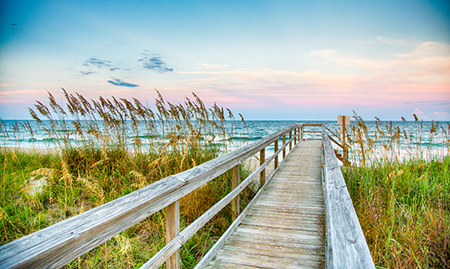Introduction
The nation's shorelines provide habitat to a great diversity of aquatic lives in water most of its life and terrestrial lives on land organisms. They serve important ecological, economic, and recreational purposes for the states that have available shoreline. The National Oceanic and Atmospheric Administration (NOAA) estimates that the United States has 95,471 miles of shoreline. Nearly half of all the construction in the United States since the 1970s has been on the coast. By the year 2000, 80% of Americans lived an hour's drive or less from the seashore.
In this lesson, you will examine
- the different coastal water types,
- the ecological, economic, and recreational importance of coastal water, and
- how the coastal water types differ from inland bodies of water.

| Lesson Objectives |
|
Following successful completion of this lesson, students will be able to...
Enduring Understanding:
The above objectives correspond with the Alabama Course of Study: Environmental Science Objectives: 4, 6, 7, 8, 9, 10, and 11 This lesson incorporates the following Literacy Standards: R1, R2, R3, R4, R5, R6, R7, R10, W1, W2, W3, W4, W6, W7, W8, W9, and W10 |
 |